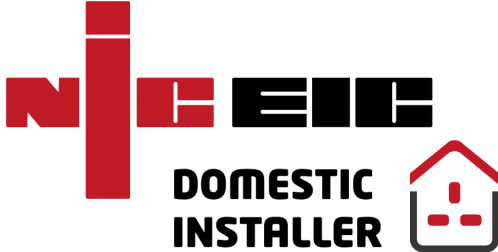The Role of Industrial Electrical Engineers in Modern UK Infrastructure
Welcome to our newest blog post, where we explore the crucial role industrial electrical engineersplay in shaping the modern infrastructure of the UK.
Electrical engineering is a broad field, but these professionals take on a whole new level of importance when it comes to the industrial sector. They are responsible for designing, developing, testing, and supervising the manufacturing of electrical equipment and systems used in industrial settings. From maintaining power systems to automating industrial machinery, their work is pivotal in keeping industries running smoothly and efficiently.
In this post, we’ll delve into industrial electrical engineers’ various roles and responsibilities and their impact on different sectors.
The Crucial Role in Power Generation and Distribution
Industrial electrical engineers are significant in power generation and distribution, ensuring industries have a steady electricity supply.
Designing and Maintaining Power Systems
Designing and maintaining power systems are critical components of power system engineering. The design process involves a comprehensive understanding of the electric system before contracts for equipment orders and construction are placed. Maintenance, conversely, is centred on ensuring that electrical equipment remains in optimal working condition. This maintenance includes regular inspections, testing, and necessary electrical equipment repairs.
The security and stability of power systems, dictated by the inherent physical properties of electricity, are fundamental. This stability requires proper design and ongoing performance and safety assessments. Moreover, there’s a need to consider whether entire electric systems need reinforcing to handle increased stress levels not anticipated during their initial design.
Safety is another key aspect in designing and maintaining electrical power systems. Design engineers and end users are responsible for upholding safety when interacting with these systems.
Power systems consist of generators, transformers, transmission lines, buses, and loads. Analyses of these systems include load flow analyses, short circuit and fault analyses, and coordination and settings of protective devices.
Implementing Energy-Efficient Solutions
Implementing energy-efficient solutions is critical to combating climate change and reducing energy costs. According to the International Energy Agency, governments can facilitate this by offering free audits for homes and buildings to identify efficiency measures and digital solutions. Energy efficiency is also deemed the easiest and most cost-effective way to combat climate change, reduce consumer energy costs, and improve environmental conditions.
Several strategies and tips are available to lower electricity costs and enhance energy efficiency. These include identifying areas where energy is being wasted and finding ways to use less. Best practices in energy efficiency can also significantly improve our health by reducing greenhouse gas emissions, improving outside air quality, and decreasing acid rain.
Creating an energy-efficient infrastructure is another important step towards achieving energy efficiency. This involves future-proofing organisations against increasing energy demands. In addition, energy efficiency and decarbonisation solutions can help reduce maintenance costs and equipment breakdown.
Innovative solutions to energy efficiency are also emerging. For instance, energy provides value by assisting businesses in increasing their water and energy consumption. Despite the challenges obstructing its adoption, energy efficiency remains a low-cost strategy supporting economic development, promoting energy security, and growing resource access.
Automation of Industrial Processes
Industrial electrical engineers play a key role in automating industrial processes, increasing productivity and efficiency.
Designing Automated Systems
The design of automated systems has become pivotal to a multitude of industrial processes. These systems span a broad spectrum, from straightforward conveyor belts in distribution centres to intricate robotic assembly lines in car manufacturing plants.
Crafting these automated systems is meticulous and requires a deep understanding of the specific industry’s needs. For instance, the design of a simple conveyor system used in UK postal sorting offices must consider the volume of mail to be sorted, the speed of operation, and the spatial limitations of the facility.
On the other end of the complexity scale, we have the advanced robotic assembly lines employed by leading UK car manufacturers such as Jaguar Land Rover. These systems are designed with precision to handle intricate tasks, from welding body parts to installing electronics, while maintaining an impressive production speed.
Each automated system in the UK is designed with specific goals, such as increasing efficiency, reducing human error, and improving safety standards. For example, in the food processing industry, automated systems are designed to ensure precision and hygiene, significantly reducing the risk of contamination.
Maintenance and Troubleshooting of Automated Systems
Automated system Maintenance and troubleshooting are essential to guarantee optimal operation. Regular maintenance is necessary to keep these systems functioning efficiently and avoid costly downtime. This process involves routine inspections, cleaning, lubricating equipment, checking and replacing worn-out parts, and testing systems to ensure they perform at their best. All these preventive measures help in averting problems before they occur, improving the return on investment, providing quality performance, reducing repair costs, and keeping the production process moving.
Troubleshooting, on the other hand, is a systematic approach used to identify and fix issues that arise within automated systems. It requires a particular mechanical and electrical knowledge level to diagnose and address these issues effectively. Effective troubleshooting techniques are critical skills for maintaining smooth operations and minimising downtime.
Despite the advancements in modern automation systems, human intervention is still needed. Maintenance and troubleshooting usually follow a systematic four-step approach: identifying the problem, planning a response, testing the solution, and implementing the repair.
Regular maintenance and effective troubleshooting are crucial in managing automated systems, ensuring longevity, and maintaining productivity.
Safety and Compliance
Ensuring safety and regulation compliance is another vital responsibility of industrial electrical engineers.
Ensuring Safety Standards
Ensuring safety standards is a paramount concern when dealing with automated systems in the UK. All electrical systems must adhere to stringent safety protocols, including proper insulation, grounding, and protection against overloads.
Insulation is a crucial safety feature that prevents electricity from escaping and causing harm. It involves using materials that resist electric current flow, safeguarding individuals and property from electric shocks.
Grounding is another critical safety measure. In the UK, all electrical systems should be correctly earthed to create a safe route for electric current to disperse in the event of a fault. This reduces the risk of electric shock and prevents damage to appliances and machinery.
Protection against overloads is also integral to ensuring safety. Overloads can cause excessive heat, potentially leading to fires. Hence, protective devices like circuit breakers and fuses are installed in electrical systems to disconnect the power when an excessive electric current is detected.
Maintaining safety standards in automated systems involves ensuring all electrical components meet specific requirements. This includes implementing correct insulation, grounding, and overload protection measures. These standards are enforced to provide a safe working environment and prevent accidents related to electrical failures.
Compliance with Regulations
Compliance with regulations is vital to managing automated systems in the United Kingdom. This includes ensuring all systems adhere to local and national electrical codes. These codes, updated regularly, set out for safe electrical design, installation, and inspection, protecting people and property from potential electrical hazards.
Adherence to these codes ensures not only the safety of the system but also its legality. Non-compliance can lead to penalties, including fines and even shutdowns. Therefore, it’s crucial for those responsible for these systems to stay up-to-date with any changes in these regulations. This involves regular reviews of the latest guidelines and implementing them accordingly.
The regulations cover various aspects of electrical installations, including the appropriate use of circuits and the correct gauge of wire for different types of circuits. They also provide guidelines for the safe installation and operation of wiring in residential settings.
Compliance with electrical codes and regulations is a critical element in the management of automated systems. It’s vital to stay informed about updates to these regulations and implement them promptly to ensure these systems’ ongoing safety and legality.
Contribution to Various Sectors
Industrial electrical engineers contribute significantly to various sectors, including manufacturing, transportation, and construction.
Manufacturing Sector
In the manufacturing sector within the United Kingdom, the maintenance and installation of electrical systems are fundamental operations. These systems play a pivotal role in the smooth running of manufacturing plants, encompassing areas such as power distribution, automation, and safety systems.
Power distribution is crucial for any manufacturing plant. It involves managing and allocating energy resources to different parts of the facility. Properly designed and maintained power distribution systems ensure that all machinery receives the required electricity to run efficiently, reducing the chances of power outages and disruptions in production.
Automation in manufacturing plants has become increasingly important. Automated systems can increase productivity, decrease labour costs, and improve quality control. They require expert design and regular maintenance to function optimally, making them a significant focus for those working with electrical systems in the sector.
Safety systems in manufacturing plants are also a top priority. These include emergency stop controls, safety interlocks, and warning devices. The design and maintenance of these systems are essential to protect workers from potential hazards and minimise the risk of accidents.
Designing, installing, and maintaining electrical systems is crucial in the UK’s manufacturing sector. These systems ensure effective power distribution, efficient automation.
Transportation and Construction Sectors
The transportation and construction sectors in the United Kingdom play a vital role in the economy. The design and maintenance of electrical systems are essential to these sectors.
Within the transportation sector, these tasks extend across various transport modes- railways, highways, or airports. Electrical systems are essential for smoothly operating signals, lighting, communication systems, etc. Systems like these ensure the efficient running of transport networks and contribute significantly to passenger safety.
In the construction sector, electrical systems are integral to any building project. From residential properties to commercial spaces, they ensure that all electrical installations meet the necessary standards and regulations. This includes everything from wiring and lighting to power outlets and safety systems.
These sectors must comply with specific UK standards and regulations, continually updated to reflect advances in technology and understanding. Thus, staying current with these changes is crucial for those involved in these sectors.
Designing and maintaining electrical systems in the UK’s transportation and construction sectors is critical. These systems ensure the efficient operation of transport networks and the safety of buildings, significantly contributing to the UK economy.
The Future of Industrial Electrical Engineering
With technological advancements, the role of industrial electrical engineers is evolving and becoming more crucial.
The Impact of Technology
The influence of technology, particularly the emergence of new technologies, is flooding the world; the Internet of Things (IoT) and Artificial Intelligence (AI) have been game-changers in industrial electrical engineering. These technological advancements have ushered in a new era, dramatically altering the engineering landscape.
This transformation is not merely superficial or limited to the application level; it penetrates deep into the very core of how electrical systems are designed and maintained. As a result, the traditional methods and practices of electrical engineering are being rapidly replaced with modern, tech-centric approaches.
Engineers are now finding themselves at the cusp of this technological revolution. Navigating these changes necessitates a significant skill shift. Engineers must now be proficient in basic electrical principles and circuit design. They need in-depth knowledge and hands-on experience in IoT and AI.
These skills are becoming increasingly crucial as they directly impact an engineer’s ability to design and maintain modern electrical systems. It’s not just about keeping up with the times; it’s about spearheading the future of industrial electrical engineering. This change is driving the evolution of the electrical engineering profession, pushing its boundaries, and redefining what it means to be an electrical engineer in the 21st century.
Designing and maintaining electrical systems in the UK’s transportation and construction sectors is critical. These systems ensure the efficient operation of transport networks and the safety of buildings, significantly contributing to the UK economy.
The Role in Energy Management
Industrial electrical engineers also play a pivotal role in managing energy use within industrial settings, which is crucial for operational efficiency and cost-effectiveness.
Energy Audits
Energy audits are integral in enhancing energy efficiency in domestic and commercial environments. The energy audit thoroughly evaluates a building’s energy use, providing a comprehensive insight into its consumption patterns, comfort levels, and safety.
These audits involve careful examination and analysis of energy flows intending to conserve energy in a building. The goal is to decrease energy usage without compromising the output. Energy efficiency is about accomplishing the same tasks but with less power.
From a financial perspective, energy audits can prove valuable. Specific areas offer tax credits for inspections that identify significant, cost-effective improvements.
Furthermore, an energy audit provides crucial information about energy consumption and efficiency. It covers a detailed walk-through of your property to assess current energy usage and pinpoints energy efficiency measures that can be implemented.
Energy audits are vital for enhancing energy efficiency and minimising energy costs. They offer a detailed overview of how energy is used and identify opportunities for improvement, making them a worthwhile investment for homeowners and businesses alike.
Energy Management Systems
Energy Management Systems (EMS) are digital tools widely used to monitor, manage, and optimise the performance of power generation and transmission systems. These systems are crucial in gathering energy data which is then presented to users in a user-friendly graphical format. They find their applications in various industrial, commercial, and public sectors to manage their energy consumption efficiently.
An essential part of energy management involves designing and implementing these EMS. They must be tailored to suit the specific needs of the building or organisation. Once set up, these systems require regular monitoring and adjustments to ensure optimal energy use.
One of the key features of an EMS is its ability to act as your home’s thermostat. This device allows you to set heating or cooling schedules, measure room temperature, control the operation of heating or cooling elements and is an integral part of the overall system.
It’s important to note the distinction between Supervisory Control and Energy Management and Data Acquisition Systems Control Systems (EMCS). SCADA ensures smooth operations, while the EMS monitors energy use to prevent wastage.
Adopting standards like ISO 50001, which emphasises continual improvement processes for environmental performance, is also crucial in energy management. The approach is plan-do-check-act.
Lastly, the data from these systems is invaluable. It provides insights that enable informed decisions about energy use, leading to more efficient practices, considerable savings on utility expenses, and a reduced environmental impact.
Involvement in Product Development
Product development in industries often involves electrical components or systems, and industrial electrical engineers are key players.
Designing Electrical Components
The design process of electrical components or systems is critical to product development. This involves creating intricate layouts that integrate these components into the overall product.
This process is key to ensuring that these components meet the required specifications and standards. This entails careful consideration of functionalities, power requirements, safety standards, and environmental factors during the design phase.
Another essential step in the design process is testing. Once the components have been designed and assembled, they must be rigorously tested to ensure they function as intended. This could involve various methods such as stress testing, performance evaluation, and quality checks.
Designing electrical components or systems is vital to product creation, requiring adherence to specifications, standards, and thorough testing to ensure optimal functionality.
Collaborating with Other Engineers
Collaboration with other engineers, including mechanical and software specialists, is fundamental to product development. This collective work allows for a more comprehensive and holistic approach to creating a new product.
As part of this team, an electrical engineer provides critical input regarding the electrical aspects of the product. Their expertise ensures that the electrical components are designed and implemented correctly, contributing to the overall functionality and efficiency of the product.
Moreover, in the event of any issues related to the electrical components, the electrical engineer plays a crucial role in troubleshooting. They leverage their knowledge and skills to identify the problem’s root cause c and propose practical solutions.
The collaboration between different types of engineers during product development is essential for successful product design and problem-solving, particularly concerning the electrical components of the product.
Importance in Training and Development
Training and development is another area where industrial electrical engineers play a significant role, especially given the constant technological advancements.
Training Staff
Training staff on the operation and maintenance of new electrical systems or equipment is critical to ensuring workplace safety and operational efficiency. As explained by Occupational Safety and Health Administration, qualified employees have received training to recognise and avoid any dangers that might be present when working on or near exposed electrical parts.
Creating an effective electrical training program is essential for the maintenance and testing procedures required for your plant’s equipment. It ensures employee qualifications and abilities, promotes the inspection and maintenance of electrical equipment, and fosters the use of correct tools.
Continual effort is required to build a preventative electrical maintenance strategy, including arranging staff training. Such training courses focus on fundamental knowledge, theory of equipment operation, and practical maintenance and troubleshooting skills.
Maintenance and engineering technicians, in particular, need to know how to work safely near energised equipment. OSHA procedure 29 CFR 1910.332 covers this training for employees who face a risk of getting an Electric shock not reduced to a safe level by the electrical installation requirements.
Training staff on operating and maintaining new electrical systems or equipment involves a comprehensive approach that includes understanding safety protocols, equipment operation, and routine maintenance procedures.
Conclusion
The role of industrial electrical engineers in the UK’s modern infrastructure is far-reaching and indispensable. They ensure the smooth operation of industries and contribute to safety, efficiency, and sustainability.
If you’re looking for expert industrial electrical engineering solutions, don’t hesitate to get in touch with us. Our team of experienced professionals is ready to assist you.









